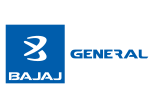Section 80CCD of the ITR
Table of Contents
A larger salary package may look attractive, but the higher the annual income, the higher the income tax rate. Every Indian citizen must pay income tax to the government when their annual income increases by a certain limit. Therefore, in order to relieve individuals of their burden of paying taxes, the government provides tax exemptions on various policies and schemes. The Indian government lets individuals save tax by stimulating them to save money for the "golden stage" of their lives through Section 80CCD of the Income Tax Act, 1961. Read on to learn all about Section 80CCD, including its types, eligibility criteria, old vs. new tax regime, and more.
Types of Deduction Under Section 80CCD
Listed below are three types of deductions applicable under Section 80CCD.
- Section 80CCD (1):
This clause allows private, public, or self-employed people who contribute to the NPS or APY scheme to receive a tax deduction of Rs. 1.5 lakh in a financial year. Employees in the private and public sectors are eligible to deduct 10% of their income contributions, while self-employed people are eligible to deduct 20% of their gross income.
- Section 80CCD (1B):
Taxpayers may claim an additional Rs. 50,000 under this sub-section if the contribution exceeds the maximum amount as specified in Section 80CCD (1).
- Section 80CCD (2):
Under Section 80CCD (2) of the Income Tax Act, employees can claim the contribution made for an employee NPS fund as a deduction. Private-sector employees can claim a deduction of up to 10% of their income, while it is 14% for government employees.
Eligibility Criteria for Section 80CCD
Here are the eligibility criteria to claim deductions under Section 80CCD.
- Section 80CCD applies to any salaried or self-employed person who contributes to the National Pension Scheme or Atal Pension Yojana.
- Section 80CCD is applicable to any company or business that makes contributions on behalf of its employees to the National Pension Scheme.
- An annual minimum contribution to the NPS of Rs. 6,000 or a monthly minimum of Rs. 500 is required in order to qualify for Section 80CCD deductions under the NPS Tier 1 Account.
- The NPS must receive a minimum yearly contribution of Rs. 2,000 or a minimum monthly contribution of Rs. 250 in order to qualify for Section 80CCD deductions under the Tier 2 Account.
Tax Deduction Under Section 80CCD In New and Old Tax Regimes
Section 80CCD(1) permits a deduction for an employee's personal National Pension Scheme contribution up to 10% of their salary. Furthermore, a total deduction under sections 80CCC, 80C, and 80CCD(1) is limited to a maximum of Rs. 1,50,000 per section 80CCE. Let's look at an example to better grasp the differences between the new and present regimes.
If your base pay in PY 2021–2022 is Rs. 15,00,000, your 10% of salary NPS, which is Rs. 1,50,000, was deducted from your annual income. Additionally, the employer contributes Rs. 1,80,000 towards NPS at a rate of 12% of pay. You put Rs. 1,000,000 into a PPF account. The calculation of taxes based on new and old tax regimes is represented in the table below.
|
Particulars |
Old Regime |
New Regime |
|
Basic Salary |
Rs. 15,00,000 |
Rs. 15,00,000 |
|
Less: Standard deduction under Section 16 |
Rs. 50,000 |
NIL |
|
Add: Employers contribution to NPS |
Rs. 1,80,000 |
Rs. 1,80,000 |
|
Gross Total Income |
Rs. 16,30,000 |
Rs. 16,80,000 |
|
Deduction under Section 80CCD (1) (1,50,000 - 90,000) |
Rs. 60,000 |
NIL |
|
Deductions under Section 80CCD (1B) |
Rs. 50,000 |
NIL |
|
Deductions under Section 80 CCD (2) |
Rs. 1,50,000 |
Rs. 1,50,000 |
|
Total Income |
Rs. 13,70,000 |
Rs. 15,30,000 |
|
Tax on Total Income |
Rs. 2,32,440 |
Rs. 2,51,160 |
Investments Under Section 80CCD
Listed below are the two types of investments that let you claim deductions under Section 80 CCD of the Income Tax Act of 1961.
- National Pension Scheme:
It is a market-linked financial instrument where an individual can invest their money up to the age of 60. An investment of money in the National Pension Scheme (NPS) is mandatory for central government employees; however, it is optional for private employees. Individuals can claim deductions up to Rs. 2 lahks. Furthermore, there are two ways to contribute the funds. Employees working in the private sector can claim a tax deduction on their Tier I account. Whereas, government employees can receive tax benefits in both Tier I and Tier II contribution accounts.
- Pradhan Mantri Pension Yojana:
The Pradhan Mantri Pension Yojana is also known as the Atal Pension Yojana. Under Section 80CCD of the Income Tax Act, it provides tax deductions under Section 80CCD to people from the unorganized sector who are between the ages of 18 and 40. An individual can claim up to Rs. 1.5 lakh and can withdraw a certain amount. Premature withdrawal is allowed for subscribers under specific conditions only.
Points to Know Before Claiming Deductions Under Section 80CCD
Some terms and conditions that you should know before claiming deductions under Section 80CCD are listed below.
- Tax reductions available to self-employed people, public sector workers, and employees of private companies.
- Applicable to contributions to NPS and APY.
- Total deduction of Rs. 2 lakh under Section 80C, Section 80CCC, Section 80CCD (1), and Section 80CCD (1B).
- Additional deduction of Rs. 50,000 for self-contribution to NPS and APY can be made.
- If a deduction has already been claimed under Section 80CCD (1B), it cannot be claimed under Section 80C (1).
- Taxes apply to the pension payment received post-retirement from NPS or APY.
- Tax-free corpus is acquired from NPS or APY after maturity.
- Section 80CCD allows individuals to claim deductions after filing income tax returns.
Conclusion
As discussed above, you can get a deduction on your taxable income through Section 80CCD of the Income Tax Act. The National Pension Scheme and Atal Pension Yojana are two schemes under which you can claim tax deductions. These savings schemes will ensure that you have enough funds to secure your life financially post-retirement. However, before claiming deductions and e-filing an ITR, study thoroughly the changes in tax structures. Moreover, enlist the help of your financial advisor in order to enjoy great tax benefits under Section 80C.
Also Read:




























